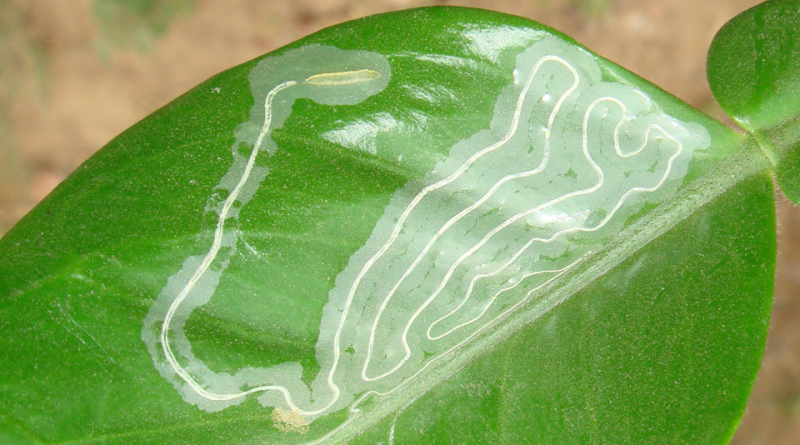Phyllocnistis citrella
Phyllocnistis citrella
The Citrus serpentine miner (Phyllocnistis citrella Stainton, 1856) is a moth of the Gracillariidae family that came to Italy in 1994.
Systematics –
From a systematic point of view it belongs to the Eukaryota Domain, Kingdom Animalia, Eumetazoa Sub-estate, Superphylum Protostomia, Phylum Arthropoda, Subphylum Tracheata, Superclass Hexapoda, Class Insecta, Subclass Pterygota, Coop Endopterygota, Superorder, Oligoneoptera, Panorpoidea Section, Lepidoptera Order, Suborder Glossata, Infraorder Heteroneura, Ditrysia Division, Gracillarioidea Superfamily, Gracillariidae Family, Subfamily Phyllocnistinae and therefore Phyllocnistis Genus and P. citrella species.
Geographic Distribution and Habitat –
Phyllocnistis citrella is an insect with origins in Southeast Asia. Later it spread to Australia and Africa and in 1993, at the same time, in Florida and in Spain. His first survey in Italy was in 1994 first in Sardinia and later in Calabria and Sicily and in all citrus areas.
Morphology –
In the adult state, Phyllocnistis citrella is a 4 mm wingspan butterfly, with silver-white fringed front wings, thin transversal dark bands and a small black spot at the apex. The larva is instead of a greenish-yellow color, which at maturity is 3 mm in length, endophyte and with a hypermetamorphic cycle; so we have larvae of I and II type. The chrysalis is characterized by a length of 2-2.5 mm, brown, which thanks to an anterior sclerite tears the epidermal layer of the leaf mine, to allow the flicker of the adult. The eggs of this insect are hyaline and lenticular.
Attitude and biological cycle –
Phyllocnistis citrella is a small miner moth that settles both on young leaves and on shoots and, more rarely, on fruits. Their presence therefore entails desiccation, necrosis and crumple and consequent leaf loss. Adults are active especially at night. The insect winters in the form of larva or chrysalis inside galleries excavated by larvae. The females lay at the median rib of the leaves, on both sides, a variable number of eggs isolated from 7 to 108. After a few days the larvae of the type penetrate into the epidermis of the leaf digging snake-like mines with a diameter of less than 1 mm. . After the first metamorphosis, the larvae of the second type emerge from the mines and form a shelter, in which they incisal, obtained by the folding of the leaf flap and the weaving of siliceous threads; the adult butterflies will come out in about a week. The biological cycle of these lepidopterans can range from 5 to 13 generations, depending on the humidity and temperature conditions, with the first attacks around the middle of June, if the temperature is already above 12 ° C. this moth has some natural antagonists, such as predators: Crisope and Tripidi and some parasitoids, such as: Pnigalio agraules, Ageniaspis citricola, Cirrospilus pictue, Semielacher petiolatus, Citrostichus phyllocnistoides Narayanan and Quadrastichus sp. for the techniques of containment and fight against this insect the following sheet can be consulted.
Ecological role –
Phyllocnistis citrella is widespread in all continents and lives on all species of the genus Citrus and can also affect plants belonging to other families: Oleaceae, Loranthaceae, Lauraceae, Leguminosa, Salicaceae and Tiliaceae. The small lepidopterus damages the larvae that, inside the leaves, dig sinuous sub-dermal mines, folded in on themselves. These galleries can be distinguished because, in addition to the serpentine pattern (hence the vulgar name) they have a dark central line, which are the excrements left by the larvae, and a silvery color due to the air contained inside. The attached leaves are deformed by bending from the edge towards the bottom. Also on the fruits there are activities of the larvae that cause more or less showy incisions and with greater damage on the lemon.
Guido Bissanti
Sources
– Wikipedia, the free encyclopedia.
– Russo G., 1976. Agricultural Entomology. Special Part. Liguori Editore, Naples.
– Tremblay E., 1997. Applied entomology. Liguori Editore, Naples.

